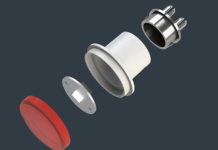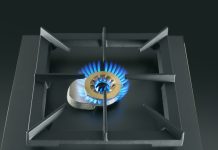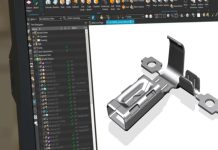 “Closing the Loop”. If we look at household appliances, this means to join in a unitary course all the phases of design, manufacturing, use and recovery/recycling/disposal of a product. To restart again from the beginning in a new process, from the design to the life end, with the exploitation of reusable resources, from the secondary raw material to the component. Therefore, the European Commission expresses the new action plan for the development of the Circular Economy, presented last December and currently under examination by the European Parliament. The adopted package of measures provides for ambitious targets like the decrease of landfills, the reduction of food waste, the boosting of the separate collection, the extension of the product service life that includes the obligation of recyclability and repair of household appliances; meant, the latter, also as prevention in the manufacturing of Weee and struggle against the “programmed obsolescence”. In particular, the circular Economy in Europe aims at increasing benefits from both the environmental and economic point of view, with the capability of developing shared synergies for the reuse of secondary raw materials thanks to the virtuous management and treatment of waste electrical and electronic equipment.
“Closing the Loop”. If we look at household appliances, this means to join in a unitary course all the phases of design, manufacturing, use and recovery/recycling/disposal of a product. To restart again from the beginning in a new process, from the design to the life end, with the exploitation of reusable resources, from the secondary raw material to the component. Therefore, the European Commission expresses the new action plan for the development of the Circular Economy, presented last December and currently under examination by the European Parliament. The adopted package of measures provides for ambitious targets like the decrease of landfills, the reduction of food waste, the boosting of the separate collection, the extension of the product service life that includes the obligation of recyclability and repair of household appliances; meant, the latter, also as prevention in the manufacturing of Weee and struggle against the “programmed obsolescence”. In particular, the circular Economy in Europe aims at increasing benefits from both the environmental and economic point of view, with the capability of developing shared synergies for the reuse of secondary raw materials thanks to the virtuous management and treatment of waste electrical and electronic equipment.
Beyond the good intentions, on the course of this new approach to the Circular Economy, an unknown is represented by the difficult economic (and geopolitical) international survey, in this phase characterized by the drop of the raw material cost, oil first, which risks of making the reuse of recycled materials scarcely appealing; as well as the absence of a shared standard on a European scale concerning the collection, the management and the recycling of Weee, able to optimize processes and intervention modalities but, especially, permitting industry to gain access to the constant provisioning of secondary raw materials. The scenario is anyway still evolving, as witnessed by the interesting prospects connected with the “re-manufacturing”, the reuse of worn-out appliances and the research projects concerning the stricter and stricter relation between Ecodesign and product disassembly at its life end.
Boosting the demand
Can the Circular Economy bring concrete advantages to the household appliance world, in search for new ways worth adopting in the name of sustainability and reduction of Weee? In the opinion of Danilo Bonato, general manager of Remedia Consortium (collective system for the eco-sustainable management of technological wastes), perils – at least in this global economic phase with lights and shades – are not missing.
“The recycling of materials coming from Weee might become an important sector for enterprises but we fight with the drop of prices of raw materials, which makes scarcely convenient or even inconvenient to recover secondary raw materials, iron and plastic first of all. To make this approach work and to offer more support to the companies that are investing in new manufacturing concepts, we should boost the demand for products made by using materials coming from the recycling”. To use recycled materials, we need different design and machining cycle. In addition to the guarantees of provisioning of secondary raw materials. “Investing in the use of recycled plastic to introduce it in the production of household appliances requires that the material is available in the necessary quality and quantity and at adequate prices, therefore we need a reliable chain”. “Big white goods”, washing machines on the top, are the household appliances that started pursuing this direction before others. “Some European projects are in course, and we are partly following them as Consortium, in which we are trying to implement optimal cycles of recovery and reuse of plastics to manufacture washers, refrigerators and dishwashers, covering even the 50% percentage out of the total of raw material used”.
The recent European regulatory texts have paved the way to an innovative approach that starts from the design and includes the product life end, encompassing the disassembly of materials and components. “The turning point always remains the action able to make the implementation of these strategies more convenient for the producer, to decrease the cost of the product management activities at its life end for those enterprises that could invest in this ambit”. Today the only European Country in which this approach is applied is France. “As Consortium, we will soon start with an initiative that will allow associated producers to save on disposal costs if they will demonstrate they own precise minimum product requisites, like the easy disassembling and the use, at least partial, of materials coming from recycling and recovery”. Do you remember the good old “returnable”? Applied to the household appliance world, the process enables companies to repossess their products at their life end. As Bonato underlines, “today virtuous consumers convey the worn-out appliance to the ecologic isle and producers lose their traces. Some companies instead start investing by creating, with the Consortium’s support, closed chains that allow recovering waste appliances and, in this way, intervening on them knowing their machining process and the materials used”. On the concept of “re-manufacturing” focused the European project “Premanus”. “With the re-manufacturing, diffused in the United States and in North Europe, the company recovers the old products at their life end, brings them back home and develops an integral process of disassembly, replacement of returnable components and reconstruction, thus achieving a product with efficiency performances that equal or exceed the initial situation’s. “Premanus” has created an instrument that allows the company to assess the convenience or not of carrying out a re-manufacturing activity or of disposing/recycling the product and the materials, according to precise economic and environmental criteria”.
The reuse of waste equipment as prevention in the production of Weee is the other bet on which Europe stakes. “Started in France, Belgium and Great Britain, this market – adds Bonato – differs from the one of new products because it addresses groups of consumers looking for a low-cost product, recovered and fully operating. In Italy we are waiting for the release of specific regulations by the Ministry for the Environment that will define the treatment modalities of the household appliances intended for reuse, also and especially in terms of safety, reliability and relationship with consumers”.
Shared standards for the recycling of Weee
The contribution of the household appliance sector in the European GDP is worth 54 billion Euros per year and it invests in innovation 1.5 billion Euros. Seven big appliances out of eight sold in Europe are directly produced on the EU territory, thanks to a labour force of 250,000 direct employees with the addition of 750,000 workers in the induced activities connected with the sector. For the European manufacturers of household appliances, the Circular Economy represents closing the loop of an industrial development grounded on innovation and competitiveness, in line with the courses of process and product innovation oriented to eco-sustainability and environmental responsibility. However, beyond the good intentions, we need clear regulations and shared standards among all various member Countries, starting from the constant improvement of the efficiency of the resources for the production of new products, from the high-quality recycling to the recovery of secondary raw materials to the life-end treatment of waste appliances.
 As underlines Paolo Falcioni, general manager of Ceced (European Committee of Domestic Equipment Manufacturers), despite the Community inputs introduced since 2002 with the starting of a new policy for the collection and management of Weee, “Europe is still strongly differentiated, in terms of roles to which the various players are called, respective competences and intervention modalities in conformity with the various national legislations. This scenario represents a hindrance for household appliance manufacturers, operating on different markets and then requested to deal with the various regulatory frames”.
As underlines Paolo Falcioni, general manager of Ceced (European Committee of Domestic Equipment Manufacturers), despite the Community inputs introduced since 2002 with the starting of a new policy for the collection and management of Weee, “Europe is still strongly differentiated, in terms of roles to which the various players are called, respective competences and intervention modalities in conformity with the various national legislations. This scenario represents a hindrance for household appliance manufacturers, operating on different markets and then requested to deal with the various regulatory frames”.
Recycling of secondary raw materials for the production of appliances with a strong “green” connotation, exploiting relevant resources otherwise dispersed: yes, certainly, but inside a coherent regulatory perimeter granting competition and zero impact on the environment. This is the focus of the debate in course for the definition of the European EN 50625 standard expected to regulate homogeneously the collection and the treatment of Weee. “Today in Europe, out of 9.5 million tons of Weee, only 3.2 are traced and managed correctly, this is the biggest hindrance to the economy circularity – adds Falcioni -. The definition of a shared standard, with severe and frequent controls of the system would allow tracing all recycling flows of wastes, treated in correct and environmentally sustainable manner. Considering that currently over 90% of the secondary raw material derive from the recycling of Weee, standardization of practices means for companies a rise of the availability of secondary raw material to be reused”. What about Italy? “Compared to the other EU Countries, it does not shine from this point of view. In Italy, we collect and opportunely treat only one third of the Weee that are collected in Nordic Countries per inhabitant. A greater commitment would be necessary by all stakeholders, institutions, companies and consumers, we should just consider that many small appliances at their life end are simply thrown in the unsorted waste dumpster. It would be instead an important resource, which might be correctly treated according to the European standard or simply exploited by maximising, with the hidden part, the value that can be drawn from it, with the relative negative repercussions on the environment”.
Ecodesign is not enough
 Federico Magalini, engineer and educator, for over fifty years has been carrying out research and consulting activity about the Weee management. Since 2005, he has been collaborating with the United Nations University, coordinating various projects for the European Commission concerning the review of the Weee Directive and the implementation of the Recast of the same. In 2011, he set up Cyrcle, an international network for consulting activities providing strategic support in the development of projects in the ambits of sustainability and industrial eco-efficiency. We asks him how we can describe today the relationship between Ecodesign and recovery and recycling of Weee at their life end, as far as household appliances and big white goods are concerned on the international research scenario. “With the introduction of the concept of manufacturer’s extended responsibility we tried to create a strong connection between the design phase and the appliance life end but, even if theoretically valid, its application turned out to be difficult since some of the environmental benefits attainable through the Ecodesign, like the phase-out of some dangerous substances or the use of more easily recyclable materials, do not influence other key factors for an effective recovery and recycling of products, such as the rise of the collection rate, the use of high environmental standards during the treatment phase and the achievement of recycling efficiency along the entire recovery and recycling phase. In my opinion – specifies Magalini – it is therefore important to separate the benefits that can be obtained through the Ecodesign, worth boosting, compared to the incentives that grant a higher efficiency in the life end phase and are not necessarily linked with Ecodesign itself”.
Federico Magalini, engineer and educator, for over fifty years has been carrying out research and consulting activity about the Weee management. Since 2005, he has been collaborating with the United Nations University, coordinating various projects for the European Commission concerning the review of the Weee Directive and the implementation of the Recast of the same. In 2011, he set up Cyrcle, an international network for consulting activities providing strategic support in the development of projects in the ambits of sustainability and industrial eco-efficiency. We asks him how we can describe today the relationship between Ecodesign and recovery and recycling of Weee at their life end, as far as household appliances and big white goods are concerned on the international research scenario. “With the introduction of the concept of manufacturer’s extended responsibility we tried to create a strong connection between the design phase and the appliance life end but, even if theoretically valid, its application turned out to be difficult since some of the environmental benefits attainable through the Ecodesign, like the phase-out of some dangerous substances or the use of more easily recyclable materials, do not influence other key factors for an effective recovery and recycling of products, such as the rise of the collection rate, the use of high environmental standards during the treatment phase and the achievement of recycling efficiency along the entire recovery and recycling phase. In my opinion – specifies Magalini – it is therefore important to separate the benefits that can be obtained through the Ecodesign, worth boosting, compared to the incentives that grant a higher efficiency in the life end phase and are not necessarily linked with Ecodesign itself”.
The recycling of components and secondary raw materials in the design and production of household appliances, including “big white goods”, is a factor that influences Ecodesign, and more in general sustainability, strategies of household appliances. “The rise of the rate of recovery and recycling of the single material, or the recovery and the reuse of the component – adds Magalini -, is a key element to increase the product sustainability. The designer’s capability of using recycled materials for the machining of new products represents an added-value. I believe anyway that the creation of direct incentives for the Ecodesign, like the differentiation of the fares applied by Consortia, likewise what has been happening for some years now in France and as required by the Circular Economy Package of the EU Commission, can provide a higher tangible contribution than boosting the Individual Responsibility. Today there are several elements that can be grouped under the term Ecodesign. Not all these elements are connected with the life end of a household appliance, we should just consider the energy consumption. The adoption of innovative business models, based on the leasing concept instead of the sale, might give a further significant contribution”. The outline of design, production, use and management of waste household appliances, in the light of the debate in course about the Circular Economy is evolving but, as Magalini ends, we need an approach change. “I believe that the present debate about the Circular Economy can urge producers to find new modalities of service delivery to users, not necessarily connected with the product sale but eventually performed through pay-per-use forms, with consequent possibility for the producer of carrying out programmed maintenances, upgrade interventions, of increasing the reuse of some components through the modularity or even more”.





